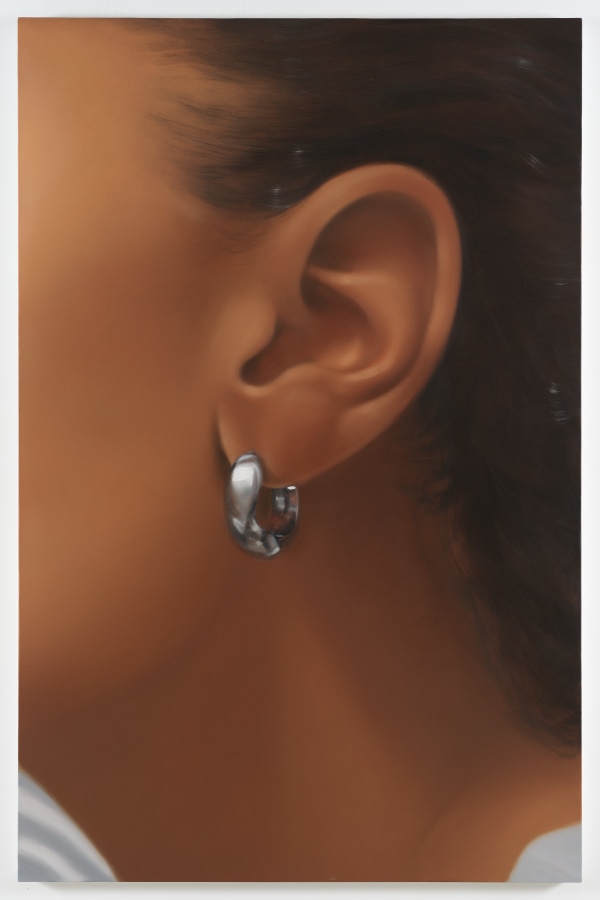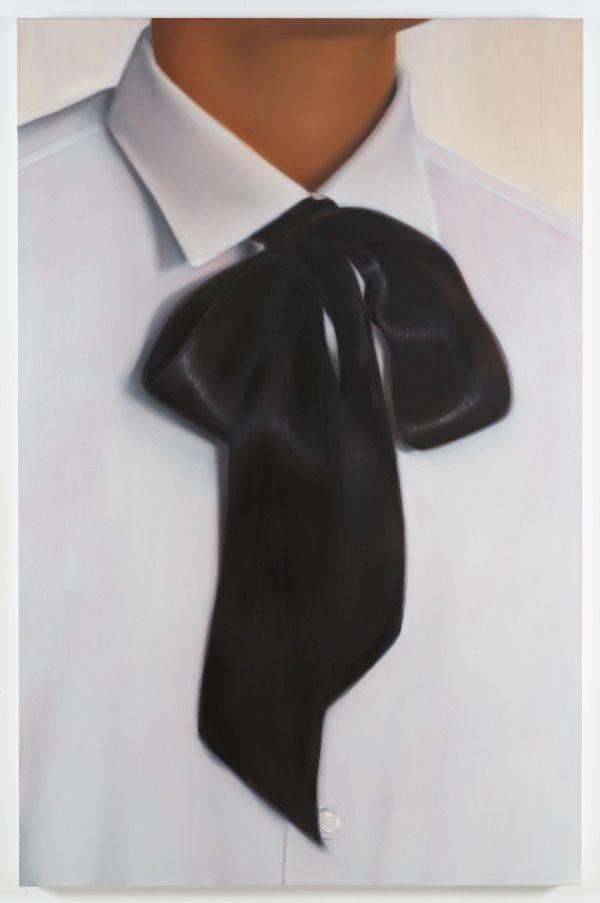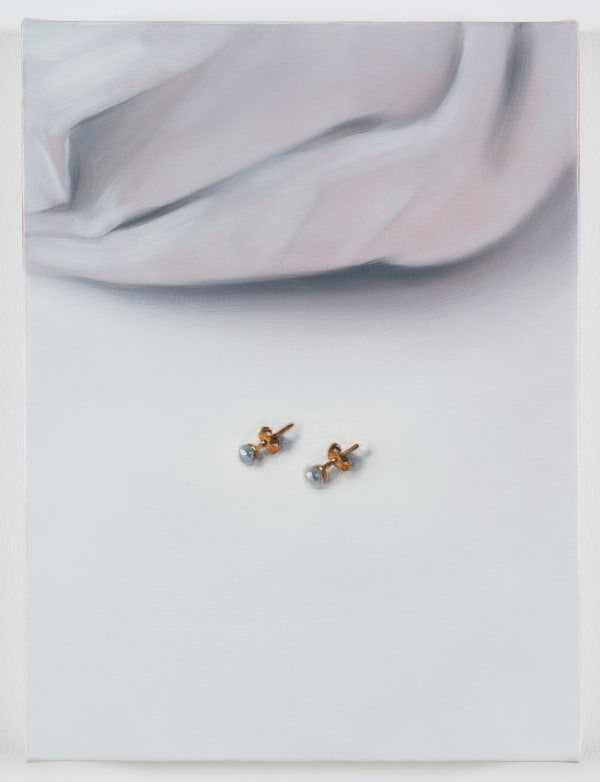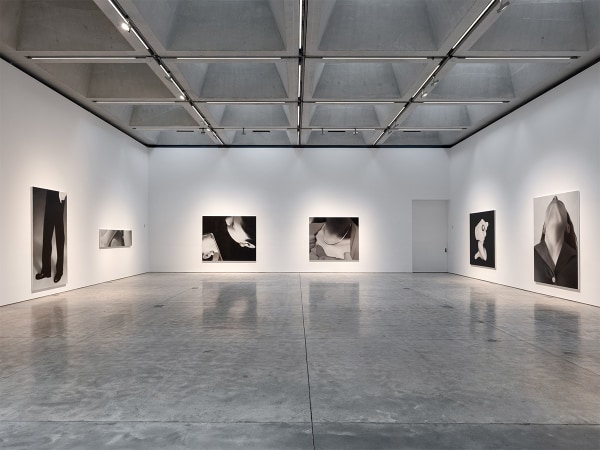Alexis Ralaivao: On s’enrichit de ce que l’on donne, on s’appauvrit de ce que l’on prend
-
-
Kasmin is thrilled to present Berlin-based painter Alexis Ralaivao’s largest New York solo exhibition to date, On s’enrichit de ce que l’on donne, on s’appauvrit de ce que l’on prend, on view at the gallery’s 297 Tenth Avenue location from June 8 through August 11, 2023. Featuring eleven new oil paintings, the exhibition reveals recent developments among Ralaivao’s signature detail views of human figures and the proprieties they observe. Articulating a sentimental ethnography of contemporary virtues and comportments, Ralaivao’s softly-rendered studies are drawn from 21st-century social life.
-
 Alexis Ralaivao, Clutching my pearls, 2022, oil on canvas.
Alexis Ralaivao, Clutching my pearls, 2022, oil on canvas. -
 Alexis Ralaivao, La source lumineuse, 2022, oil on canvas.
Alexis Ralaivao, La source lumineuse, 2022, oil on canvas. -
Working with three main models—his girlfriend, his brother, and a close friend—Ralaivao retains a familial character in his work. “I can’t paint people I’m not really intimate with,” Ralaivao told the Artsy Vanguard on the occasion of his 2022 spotlight. “It feels more authentic rather than [depicting] someone I don’t know, I won’t be emotionally involved enough to paint it well.” Ensuring the longevity of this personal connection to each work, Ralaivao inscribes a unique text on the verso of each canvas, hidden from installation view but certain to be unearthed by a future generation—a nod to the artist’s study of online art conservation videos that have shaped his understanding of the canvas as a layered archaeological site, one to be treated like a time capsule. While Ralaivao has previously inscribed personal diary entries on his canvases, this exhibition marks the first time the artist has authored a short story corresponding with the works on view—a fragment of which hides behind its respective composition—equally recalling French author Guy de Maupassant’s famous short story The Necklace (1884) and the German artist Max Klinger’s set of etchings Paraphrase on the Finding of a Glove (1877–78). Taken from the 1992 science fiction novel Le jour des fourmis by French writer Bernard Werber, the exhibition title—“we are enriched by what we give, we are impoverished by what we take”—alludes to Ralaivao’s thoughtful anticipation of the relics that will come to define his subjects’ social condition, all while encapsulating the moral of the story on view.
-
Works
-
About the Artist
 Portrait by Rosa Lacavalla.
Portrait by Rosa Lacavalla. -
Explore
-

Alexis Ralaivao: Éloge de l’ombre (In Praise of Shadows)
May 15 – July 25, 2025 509 West 27th Street, New YorkFor Éloge de l’ombre (In Praise of Shadows), Ralaivao unveils a suite of new paintings rendered entirely in black and white. Working within the self-imposed parameters of a reduced palette,... -

Theodora Allen: Oak
May 7 – July 25, 2025 297 Tenth Avenue, New YorkAllen’s atmospheric oil paintings on linen depict natural phenomena and symbols chosen for their enduring presence in human history and culture, often drawing from mythology and medieval imagery. From hearts... -

Alma Allen on Park Avenue
May 2 – September 30, 2025In Alma Allen's largest outdoor installation to date, ten unique bronze and onyx sculptures including examples reaching over 10 feet tall and realized especially for the exhibition, are on view...
-

















